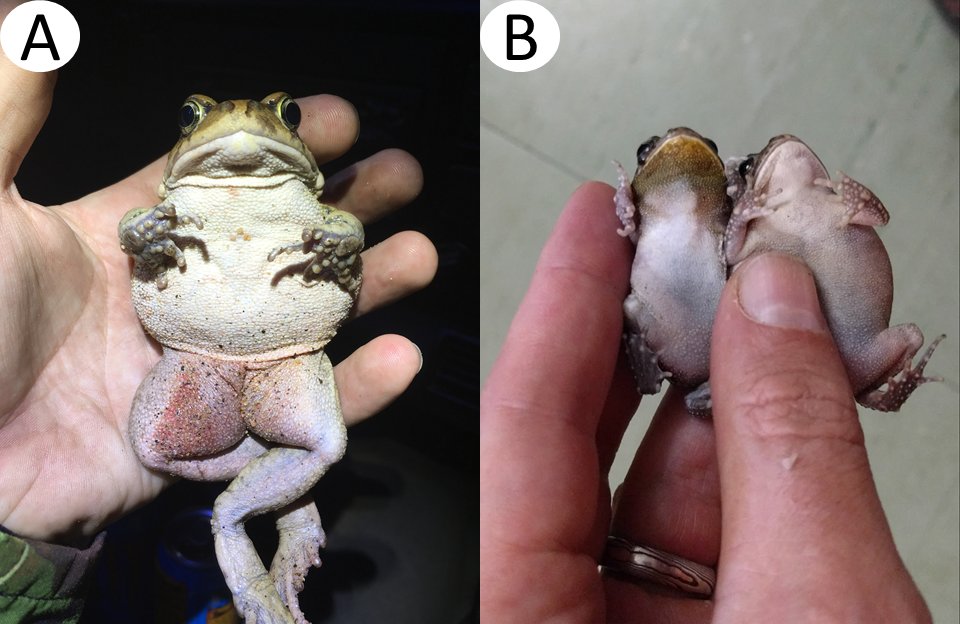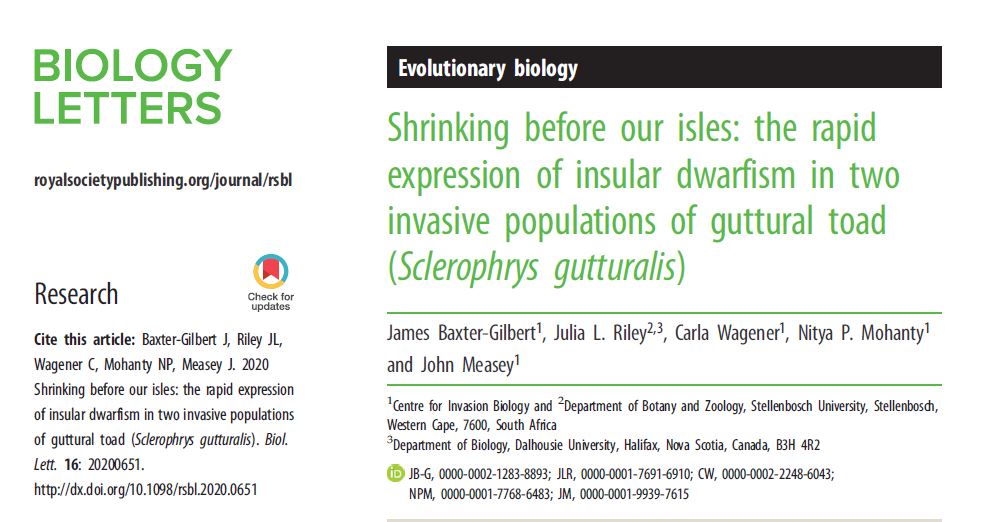Miniature toads on Mauritius and Réunion
From time to time you make a natural history observation that really blows your mind. This was the case when I visited Mauritius in 2017 (seehere). I was there to study their Guttural Toads which had been introduced to the island in 1922. I had already heard from Giovanni Vimercati who had visited Mauritius himself several years earlier that the toads were very small, but it wasn't until I saw them that I realized the full magnitude of what had happened. In less than 100 years since their introduction these toads had shrunk.

Guttural Toads,Sclerophrys gutturalis, are a familiar feature in large parts of sub-Saharan Africa. They regularly inhabit urban areas taking advantage of lights to capture attracted insect prey. I have seen these toads in Kenya and Tanzania and they always appear quite large no matter the altitude or setting. So it was quite startling to see these mini toads on Mauritius.
Last year James Baxter-Gilbert visited Mauritius together with other members of the MeaseyLab to measure guttural toads and conduct some experiments with them (seeblog post). James managed to measure a large number of toads on both Mauritius and Réunion measuring not just their size but also their limb and jaw lengths. When he analyzed the data, James found that not only had the size changed but the limbs had changed their relative lengths as well. Overall, limbs were shorter on the island toads suggesting that their dispersal capacity is reduced.
There are of course many outstanding questions about these observations. Is this miniaturization and change in limb length a permanent evolutionary change or a plastic reaction that would see them swap back to the regular size if reared on the mainland? We are hoping to address this question in future with a common garden experiment in Durban (watch this space!).
Other outstanding questions concern the reason why the environments on Mauritius and Réunion caused the toads to miniaturise. There are several competing theories but of course it could be a combination of any of these. Toads that need to move less on the small islands don't need large sizes and limb lengths. When released from the usual predation regime toads may revert to a smaller size that would be more vulnerable to mainland predators. Reproduction may occur more regularly on the islands meaning that the toads do not need to store energy for single reproductive bouts. Instead they could reproduce many times with small batches of eggs during the year.
As you can tell there is still plenty of research to be done on guttural toads. The publication of this natural history observation is simply the first of what we believe will be many exciting investigations into this island invasion system.
Read all about it here:
Baxter-Gilbert, J.H., Riley, J.L., Wagener, C., Mohanty, N.P., Measey, J. (in press) Shrinking before our isles: The rapid expression of insular dwarfism in two invasive populations of guttural toad (Sclerophrys gutturalis).Biology Letters http://dx.doi.org/10.1098/rsbl.2020.0651pdf

